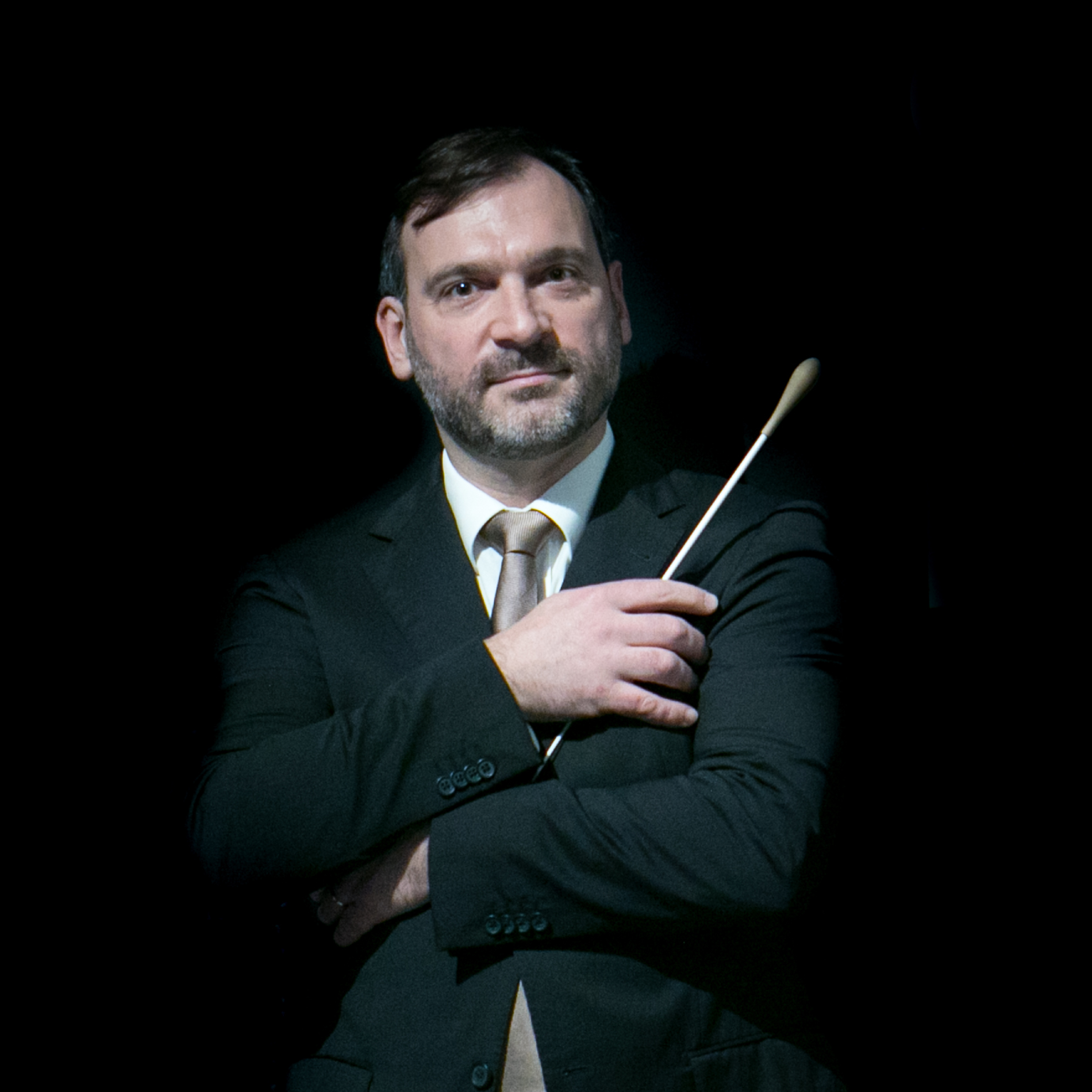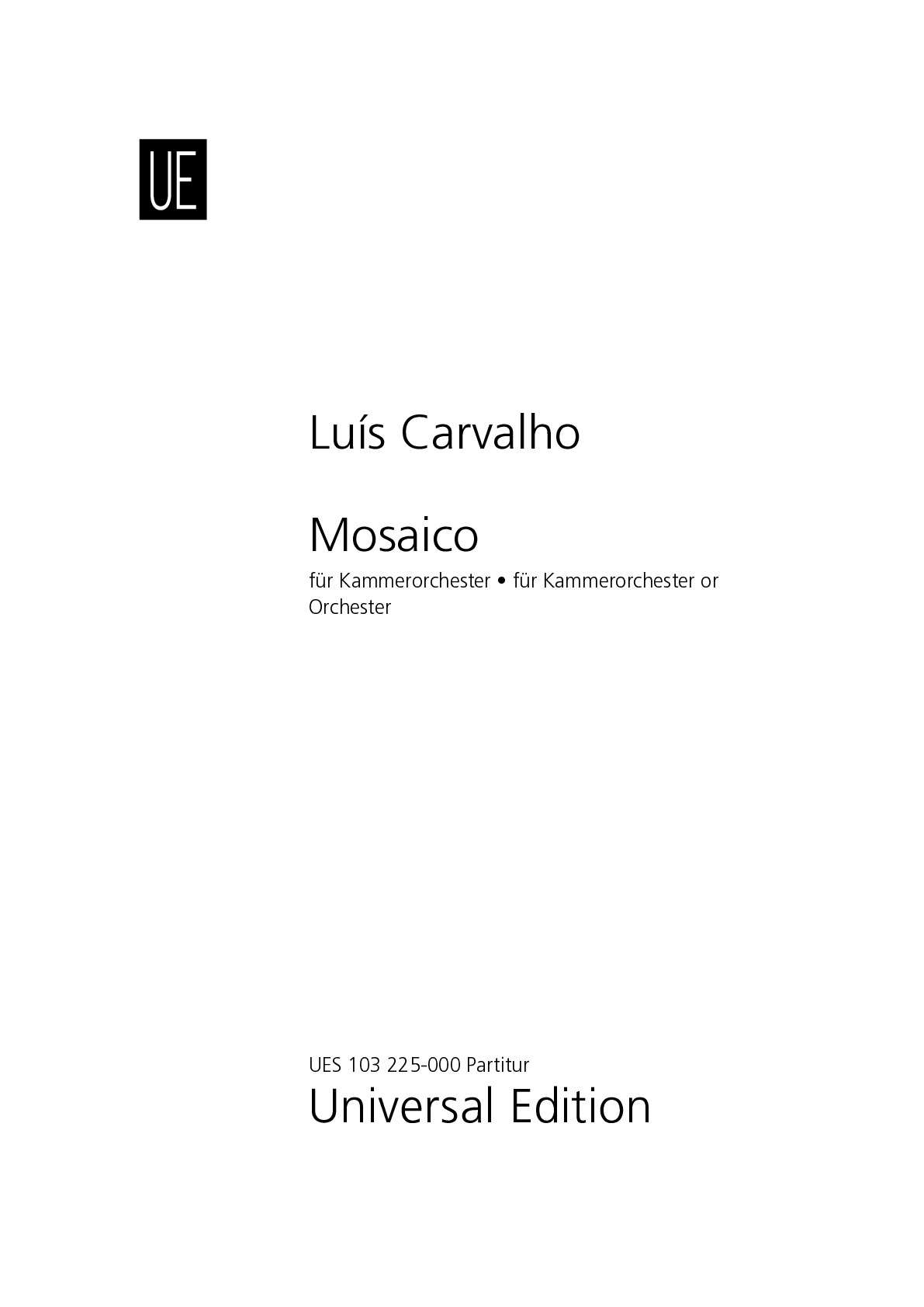

Luís Carvalho
Mosaico
Short instrumentation: 2 2 2 2 - 2 2 0 0, timp, perc, str
Duration: 11'
Instrumentation details:
1st flute
2nd flute (+picc)
1st oboe
2nd oboe (+c.a)
clarinet in Bb
clarinet in A (+bass cl(Bb))
1st bassoon
2nd bassoon
1st horn in F
2nd horn in F
1st trumpet in C
2nd trumpet in C
timpani
percussion
violin I (6 players)
violin II (5 players)
viola (4 players)
violoncello (3 players)
double bass (2 players)
Mosaico
Printed/Digital
Translation, reprints and more

Luís Carvalho
MosaicoOrchestration: für Kammerorchester
Type: Dirigierpartitur
Sample pages
Video
Work introduction
MOSAICO (Mosaic) is a millenarian decorative art technique, characterized by the assemblage of small coloured pieces (tesselas), most commonly stones, but existing also in other materials such as glass, shells, and even plastic or beads. The aim of the mosaics is to fill artistically surfaces such as floors, walls and even ceilings. Often their depictions are figurative, exhibiting human portrayals, natural landscapes or geometric compositions. The traditional bi-chromatic Portuguese pavement (“calçada portuguesa” – usually in black & white stones) represents a very particular variant of this art, decorating large urban areas, most commonly in geometric patterns.
The word ‘mosaic’, despite its obscure etymological origin, derives most probably from the Greek mousaikón, which means «belonging to the Muses», hence «artistic». The Muses were the inspirational deities of the arts and sciences in ancient Greek mythology (Euterpe for music, Caliope for poetry, Urania for astronomy, etc.), and it is believed that that same term may also have given rise to the word «music».
In the present piece, the idea of mosaic serves as a metaphor for the construction of a broad musical form (a single continuous movement), which derives from the combination of multiple short thematic fragments/motifs (corresponding themselves, also metaphorically, to the «tesselas» mentioned above). Organized in a succession of separate but complementary sections, the chaining of the parts is guaranteed by metric modulation, a device that acts as the structural pivot of the whole piece. As for the inner musical construction, both horizontally (melodically) as well as vertically (harmonically), its content is based on the geometric organization of interval relationships, essentially the minor second (or half-tone) and the augmented second (or minor third). However, this creative approach is not taken up restrictively, and other compositional processes are integrated into the flow of the musical discourse, materializing, hopefully in a diversified but coherent artistic object.
_________________________________________________________________
This piece was awarded the 1st Composition Prize Francisco Martins (2017), held by the Orquestra Clássica do Centro (OCC) in Coimbra [Portugal].
World premiere on November 17, 2017, at the Main Hall of the Coimbra Conservatory of Music, by the Orquestra Clássica do Centro under the music direction of José Eduardo Gomes.
